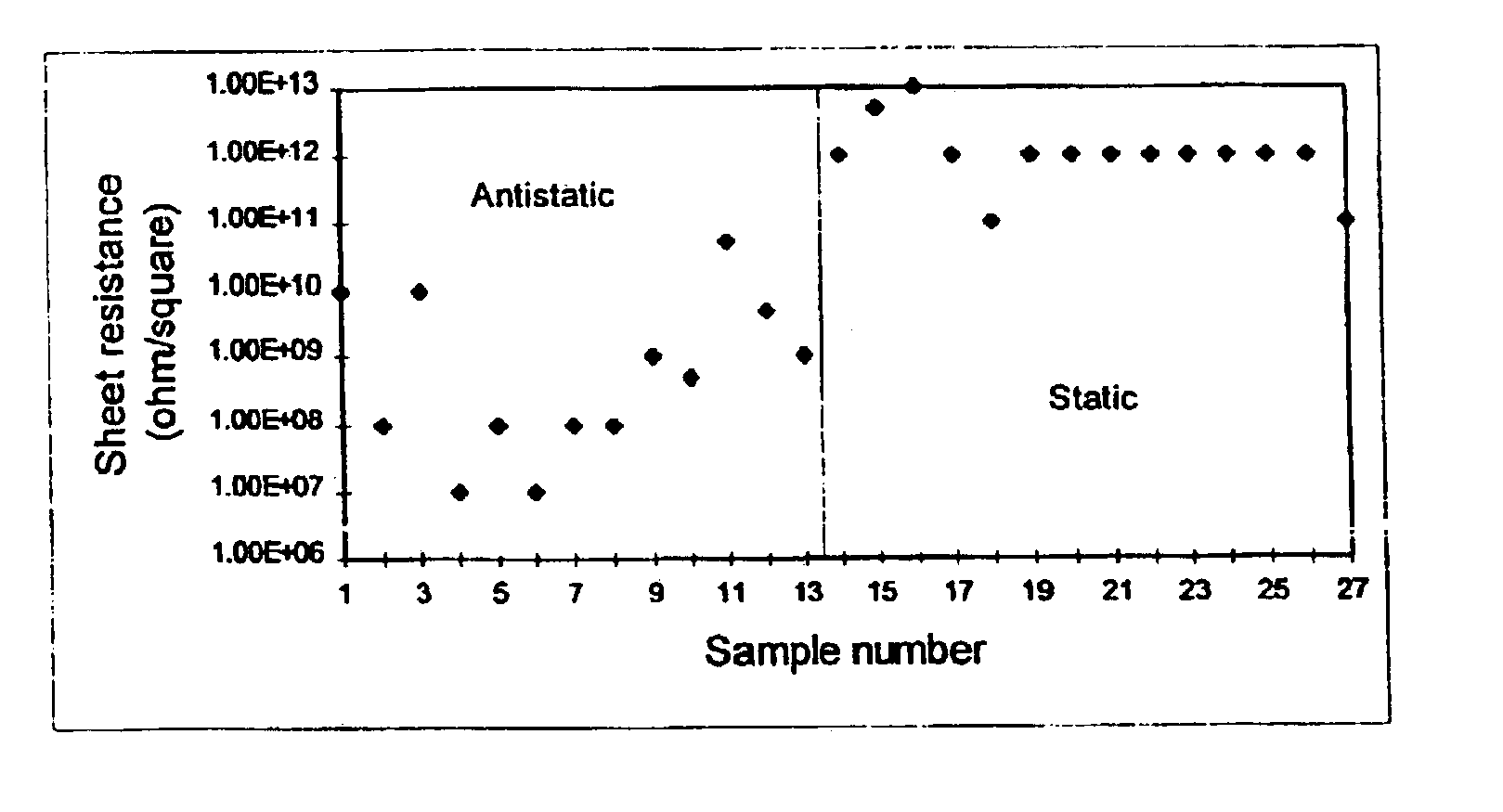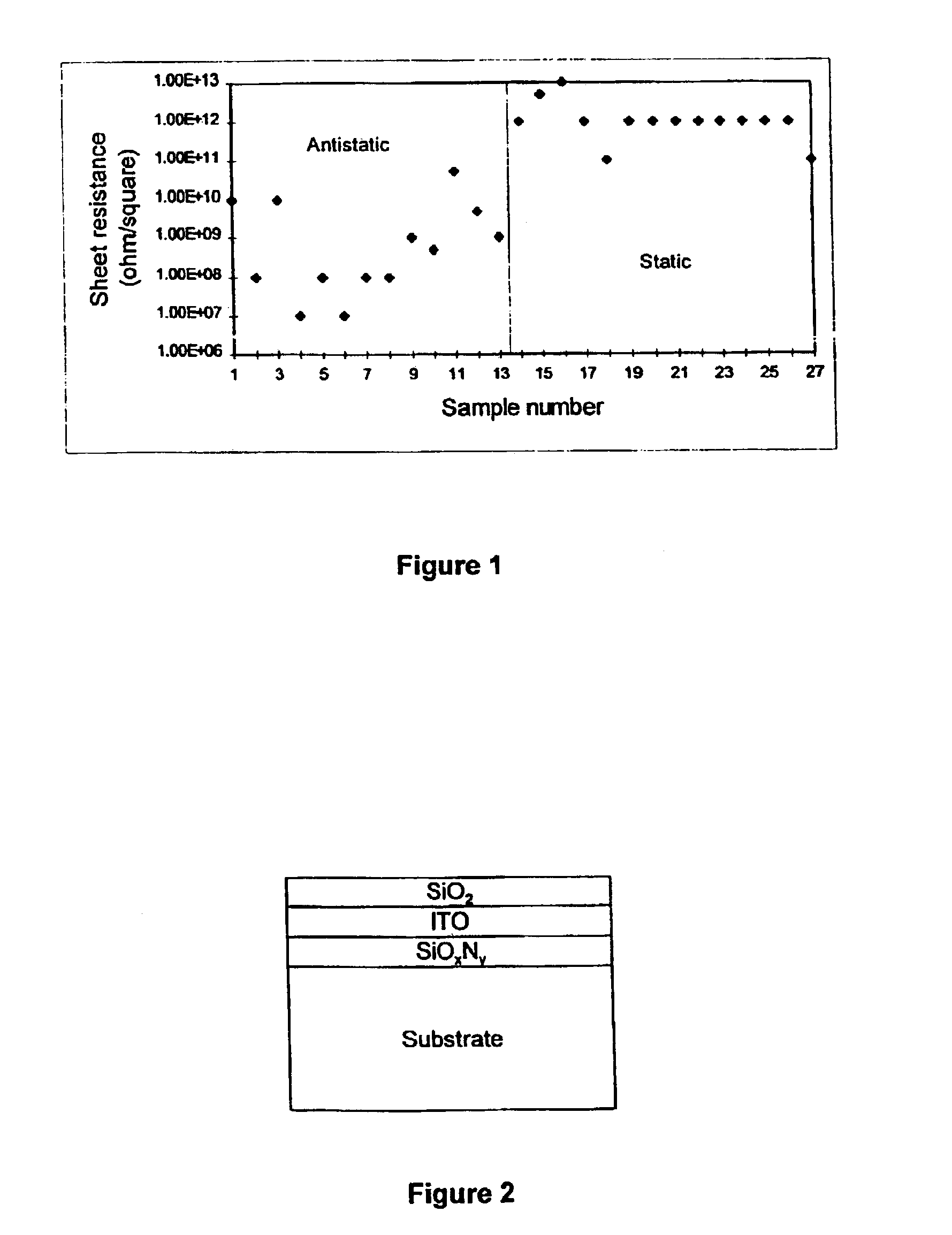Anti-static, anti-reflection coating
- Summary
- Abstract
- Description
- Claims
- Application Information
AI Technical Summary
Benefits of technology
Problems solved by technology
Method used
Image
Examples
first preferred embodiment
[0061]In accordance with a first preferred embodiment of the present invention, an anti-reflection coating (in the form of a thin film) comprising an electrically conductive layer of indium-tin oxide (ITO) was deposited on a number of transparent substrates by reactive sputtering in order to test for deposition rate, absorption, optical properties, static properties and resistivity properties.
[0062]The transparent substrates were polycarbonate and glass sheets for the determination of deposition rate and absorption, CR-39 flat substrates for resistivity measurements, and hard coated CR-39 plano lenses for both optical and static properties.
[0063]In relation to the various parameters measured, film thicknesses and refractive indices were estimated by fitting calculated spectra to the average of three reflection measurements obtained on a spectrophotometer; film absorption was calculated from reflection and transmission spectra; luminous (photopic) absorption was chosen as a represent...
PUM
| Property | Measurement | Unit |
|---|---|---|
| Thickness | aaaaa | aaaaa |
| Thickness | aaaaa | aaaaa |
| Thickness | aaaaa | aaaaa |
Abstract
Description
Claims
Application Information
 Login to View More
Login to View More - R&D
- Intellectual Property
- Life Sciences
- Materials
- Tech Scout
- Unparalleled Data Quality
- Higher Quality Content
- 60% Fewer Hallucinations
Browse by: Latest US Patents, China's latest patents, Technical Efficacy Thesaurus, Application Domain, Technology Topic, Popular Technical Reports.
© 2025 PatSnap. All rights reserved.Legal|Privacy policy|Modern Slavery Act Transparency Statement|Sitemap|About US| Contact US: help@patsnap.com



